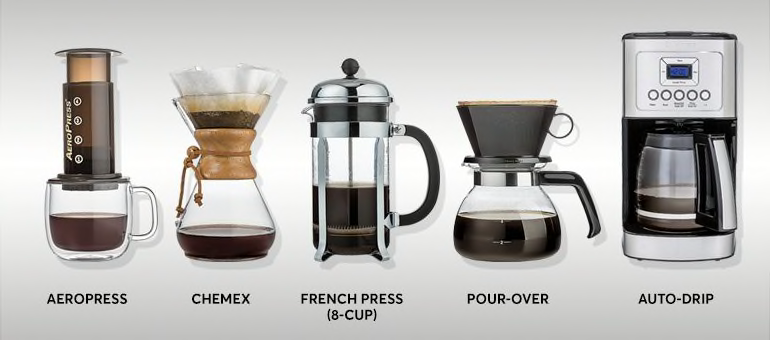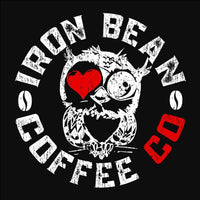How to Brew the Perfect Cup of Coffee


Aficionados have more tools to tinker with than ever. Here’s how to make quality java at home.
How to take your at-home coffee brewing—whether you’re using a no-nonsense drip pot or an alternative brewer—from so-so to pro-pro.
Gather Your Tools
Just as a seasoned chef wouldn’t cook without quality ingredients and equipment, a barista is only as good as her beans and tools. You can get a decent cup of coffee without investing in all of the gadgets and ingredients below, but doing so will help you to replicate the coffee-shop experience at home.
- Buy quality, fresh beans. Coffee beans begin to lose their flavor and aroma rapidly after roasting and grinding. To boost the taste and freshness of your brew, look for whole beans that have been roasted right before shipping to you.
- Don’t grind the beans until you’re ready to brew.
- Invest in a burr grinder. For a smooth, well-rounded cup, the size and shape of the coffee grounds matter. The helicopter motion of a blade grinder produces uneven-sized grounds, while a burr grinder uses abrasive, cylindrical surfaces (the burrs) to crush beans into a uniform grind size. Burr grinders also have different settings, so you get the right consistency for the brewing method you’re using. Burr grinders are typically pricier than blade grinders but are worth the expense if you’re looking for a more balanced brew, which may result in a tastier cup. And the Aroma of freshly grinding beans is an experience that is priceless.
- Take the water’s temperature. The optimal brewing temperature for maximum flavor extraction is between 195° and 205° F. Use a thermometer to make sure your water is hot enough. Also use filtered water, since impurities in tap water can introduce off-flavors to your brew.
- Weigh your coffee—and water. A gram scale will help you measure the precise amount of coffee and water to ensure the perfect ratio when brewing.
- Time it. A kitchen timer (or the timer on a smartphone) is essential for making sure you don’t over- or under-extract the flavors from the coffee grounds.
Pick Your Brew Method
There’s no one right way to brew coffee. In fact, you’ll probably end up tweaking each of these methods to find the right one for your taste.


But if you follow the steps below you’ll find yourself with a flavorful, quality cup every time. Note that each method can produce a different-tasting brew, so use the tasting notes from our test to pick the one that suits your flavor preferences best.
AEROPRESS
Tasting Notes: Fairly complex coffee with good body and aroma.
Pros and Cons: Perfect for when you want a quick, single-serving cup without sacrificing flavor. It’s easy to use and clean and produces coffee that is more complex than drip but just a touch less so than the other methods below.
1. Grind coffee beans to fine.
2. Wet the rubber piston and insert it into the brewing cylinder about ¼ inch. Flip the brewer upside down and place on gram scale. Zero the scale.
3. Add 17 grams of coffee to the cylinder. Zero the scale.
4. Slowly add 250 grams of hot filtered water (205° F).
5. Steep for 1 minute, 15 seconds.
6. Place paper filter into filter holder, moisten filter with hot water, and lock holder in place.
7. Flip brewer over and stand on a cup. Gently press down on the brewing cylinder with steady pressure until there is no more water to push through the device.
CHEMEX
Tasting Notes: Complex, aromatic, and balanced brew with sweet, juicy undertones.
Pros and Cons: The thick Chemex-branded filters regulate the filtration rate and keep sediment out. The carafe is easy to pour, but the narrow neck makes it difficult to clean by hand. The wooden handle isn’t dishwasher-safe, but it can be easily removed.
1. Grind coffee beans to medium-fine.
2. Place paper filter in vessel and moisten with hot water. Pour off excess water.
3. Put Chemex on gram scale. Zero the scale.
4. Place 32 of grams ground coffee into the filter. Zero the scale.
5. Pour 60 to 70 grams of hot filtered water (205° F) in a circular motion to cover the grounds. Wait 45 seconds.
6. Pour the rest of the water slowly in a circular motion over grounds until scale reaches 500 grams total.
Note: Water should drain between 3 minutes, 30 seconds and 4 minutes, 15 seconds. If it takes longer, grind more coarsely; if less, grind more finely.
FRENCH PRESS
Tasting Notes: Flavorful and full-bodied.
Pros and Cons: Without a paper filter, this coffee retains its natural oils, creating a bolder taste. The mesh filter holds back most of the grounds, but small, powderlike coffee grounds (called “fines”) can remain in the brew, creating a somewhat viscous cup. WE like fines!!
1. Grind coffee beans to coarse.
2. Put carafe on the gram scale. Zero the scale.
2. Place 35 grams of coffee into the carafe. Zero the scale.
3. Add 250 grams of hot filtered water (205° F).
4. Stir with a metal spoon for approximately 5 seconds.
5. Add water to 500 grams total.
6. Set timer for 4 minutes. At 2 minutes, stir.
7. At 4 minutes, press the plunger slowly and pour it into your mug.
POUR-OVER
Tasting Notes: Full, juicy, and sweet flavors that aren’t too aggressive, with a smooth mouth-feel.
Pros and Cons: This type of brewer is easy to clean and takes up just a little space in your cupboard. You can also brew coffee directly into your mug, minimizing dirty dishes.
1. Grind coffee beans to medium-fine.
2. Put brewing vessel on top of cup or carafe and place a paper filter in the vessel; moisten filter with hot water. Pour off excess water.
3. Place cup and brewing vessel onto the gram scale. Zero the scale.
4. Put 32 grams of ground coffee into the filter. Zero the scale.
5. Pour 64 grams of hot filtered water (205° F) over the coffee in a circular motion. Let sit for 40 seconds.
6. Pour the rest of the water slowly over grounds until the scale reaches 500 grams total.
Note: Water should drain between 3 minutes, 30 seconds and 4 minutes, 15 seconds. If it takes longer, grind coffee more coarsely; if it takes less time, grind it more finely.
AUTO-DRIP
Tasting Notes: Less control over your brew can mean a slightly more astringent cup with slightly lower complexity than the other alternative methods. But if convenience is more important than perfection, auto-drip is a good choice.
Pros and Cons: Auto-drip makers are popular because they’re easy to use and clean, and they brew coffee quickly. You may notice that the coffee's fruity, somewhat sweeter notes are masked by a sharper acidity.
1. Grind coffee beans to medium-fine.
2. If using a paper filter, place in the filter basket and moisten with hot water. Let the water run through to carafe and discard.
3. To make four 6-oz. cups, place about 6 Tbsp. ground coffee into the filter. Pour 24 oz. cold filtered water into the water reservoir. Press start.
We hope you find your head filled with a little more knowledge, some ideas on how you're going to brew your next cup, and a craving for some Iron Bean!!

The Perfect Fresh Roasted beans to start your




Leave a comment